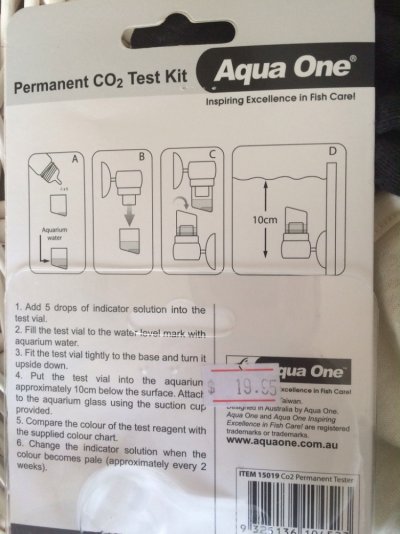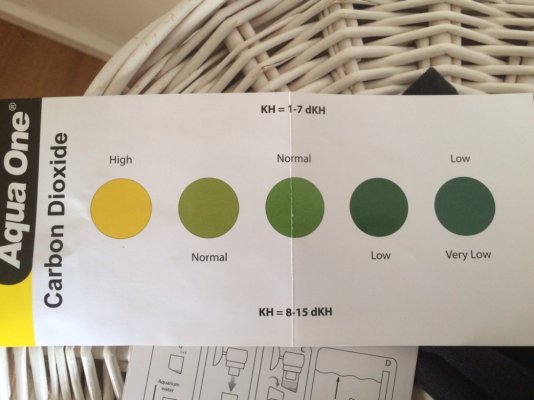Labidis,
It appears that one VERY important note is missing from the instructions on your drop tester. It typically takes 2-3 hours or more for the indicator solution to balance out with the tank's CO2 levels. This explains why the reading changed several hours later.
As to the pH-kH charts, they are a good starting point, but assume that you don't have any other major players in the equation. The charts rely on the fact that as your buffering capacity increases, the pH will change less for a given amount of CO2. The major buffer in your tank will be the carbonate hardness as indicated by the kH test kit. I did quite extensive research prior to switching to CO2 injection, part of that was learning that other trace chemicals/elements can skew the readings from the charts. The pH-kH test assumes that the carbonates are the only buffers affecting pH when the CO2 is added. There are a few other compounds that can also act as buffers in the tank (I don't remember right off what they are) and the kH test won't take these into account. This means that you may have MORE buffers (but not less) than indicated by the kh test, and so your pH level could indicate a higher level of CO2 than the chart would indicate. Also, there may be a non-CO2 related influence on your pH that is independent of the kH buffering.
A good initial test is to check your CO2 using the pH-kH charts BEFORE you begin CO2 injection. With normal aeration in a tank and no injected CO2, the water will balance out at 3-4ppm CO2. Knowing this, you can run the pH-kH test and compare your results to this baseline. You'd now have to discontinue injection and aerate for several days before attempting this baseline.
A drop checker eliminates these uncertainties entirely by using a controlled test solution that is kH buffered to 4dkH with no other buffers present. This solution is coupled to the tank via an air coupling, so that the CO2 in the tank water freely moves to the indicator solution and vice-versa, but other impurities cannot. This water-air-water coupling is the reason you have to wait a few hours for a reading. The greater the surface-area to volume ratio of the tester the faster its response will be (this is why most testers use a rather shallow chamber for the indicator solution).
A side note (and why I asked earlier) some tester kits provide the indicator drops (pH test indicator) and instruct you to use tank water + drops in the tester. As you now know, these cannot be accurate since there is no way to know the exact buffering capacity of your tank water. Your drop checker is one of these using aquarium water, but no fear; you can buy the 4dkH test solution on eBay or other online aquarium suppliers. Simply fill your checker to the indicated line with the solution and you're good to go.
NOTE: You can get the 4dkH solution WITHOUT the indicator (will be clear), to this you add a couple drops or normal range pH indicator. If the solution already has a green or blue color it includes the indicator and is ready to use without additional drops.


